
What is a Flat Pattern Development in Sheet Metal Fabrication?
Before any bending begins, a sheet metal part starts life as a 2D layout. That’s the flat pattern development. It’s...
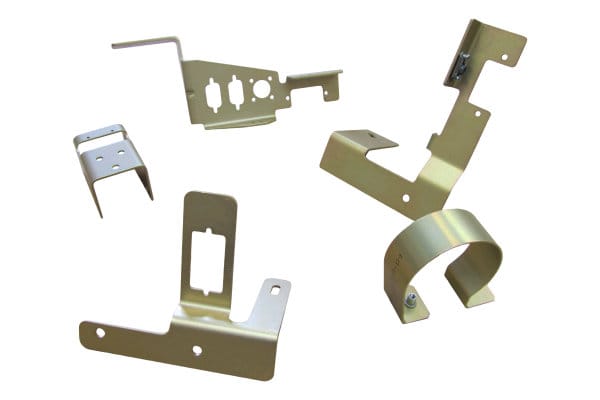
Sheet metal bending is a process in metal fabrication that shapes flat sheets of metal into three-dimensional structures. By applying force, fabricators can form various angles and curves, precisely meeting specific design requirements. This process is essential in manufacturing durable components for industries like automotive, aerospace, and construction.
Bending is often preferred over techniques like welding because it improves the material’s strength without the need for additional joints or supports. This makes it a cost-effective and efficient choice for forming strong, durable products.
Without bending, many everyday metal components wouldn’t exist, such as car frames, building structures, and even electronic enclosures. The ability to shape metal with accuracy means that products are both functional and aesthetically appealing.
From simple brackets to complex geometries, sheet metal bending offers the flexibility needed for diverse applications. This skill is highly valuable in manufacturing, where precision and safety are needed to produce high-quality products.
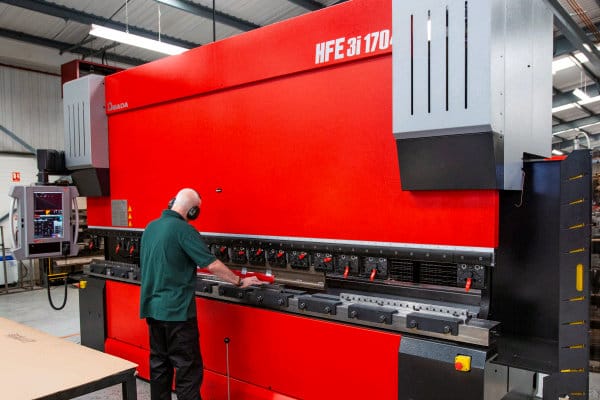
Sheet metal bending is the process of deforming a flat metal sheet by applying force to achieve specific angles and shapes. This technique is essential in transforming flat sheets into functional components for various applications.
Bending works through plastic deformation, where the metal is stretched or compressed beyond its yield point without breaking. This permanent change in shape allows fabricators to create a wide variety of parts, from simple bends to more intricate designs, all while maintaining the material’s integrity.
The precision required in sheet metal bending is strongly advised, as any misjudgement in force or angle can lead to defects such as warping or cracking. Skilled operators, along with the appropriate tools means that each bend meets the necessary design specifications.
This process is indispensable across industries, including automotive, construction, and electronics. Whether it’s creating machine parts or decorative elements for buildings, sheet metal bending is versatile and adaptable to a range of materials and thicknesses. It allows manufacturers to produce both mass-produced items and customised components, which provides flexibility in fabrication.
Achieving consistent precision in bending requires a combination of experience, the right equipment, and an understanding of the material being used, making it a fundamental skill in modern metalworking.
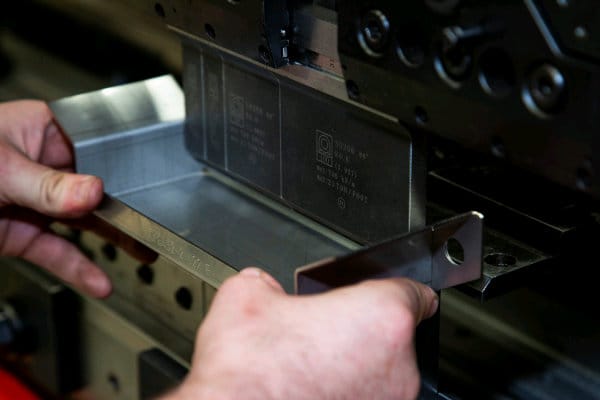
Bending plays a big role in metal fabrication by improving both the strength and functionality of the material. When a flat metal sheet is bent, its structural integrity often improves, eliminating the need for additional supports or reinforcements. This makes bending a preferred method in industries like automotive, aerospace, and construction, where strength is essential.
Compared to other techniques, such as welding, bending is more cost-effective and efficient. Welding can result in material waste and increased labour, while bending allows fabricators to work with a single piece of metal, reducing waste and cutting costs. This also speeds up production, as fewer joints are required, making it a time-saving option for manufacturers.
Bending is widely used in applications where both precision and durability are needed. In the automotive sector, for example, bent metal components form the backbone of vehicle frames, providing strength without unnecessary weight. Similarly, aerospace engineering relies on precision bending to produce lightweight yet strong components that meet strict safety standards.
In construction, bent metal is used in structural elements such as beams and brackets, which need to withstand heavy loads while maintaining a specific shape. The ability to customise shapes and angles without compromising material strength makes bending an invaluable technique for metal fabrication.
Additionally, bending helps reduce material waste by forming complex shapes from a single sheet of metal, avoiding the need for cut pieces to be joined together. This makes it an economical and environmentally friendly option for mass production and custom projects alike.
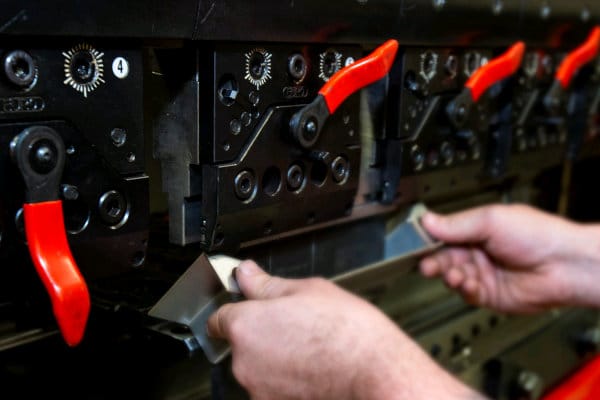
In the automotive industry, bent metal forms the base of vehicle frames, and provides both strength and flexibility. Bending provides a seamless, joint-free structure that reduces the risk of failure in high-stress conditions, unlike welding, which creates points of weakness. In aerospace, precision bending is needed for lightweight but strong components, where even small deviations could affect performance. The construction sector relies on bent metal for both structural and decorative elements, where custom bends improve both functionality and aesthetics. In each of these industries, bending reduces material wastage, cuts costs, and speeds up production processes.
Machinery and equipment manufacturing heavily rely on bent metal to produce frames, panels, and protective covers. The customisation offered by bending techniques allows manufacturers to meet precise specifications, which is essential for the effective operation of machinery. Bent metal components can be adapted to different sizes and shapes, making the process versatile for both large-scale production and smaller projects.
One of the key advantages of sheet metal bending is its flexibility for both low and high-volume production. For instance, a manufacturer working with a small engineering firm may need to create a custom machine part prototype with precise specifications. Bending allows them to produce this one-off part without the need for costly moulds. On the other hand, the same bending techniques can be scaled up for mass production and provide consistency and precision across thousands of units, making it a much-needed process for large-scale manufacturers in sectors like construction or electronics.
One of the major strengths of sheet metal bending is its ability to cater to a wide range of production needs. Manufacturers can easily shift from creating bespoke, one-off prototypes for engineering firms to mass-producing components for large-scale industrial applications. This flexibility enables businesses to meet unique client demands, whether it’s producing a custom machine part for a specialised project or scaling up production for thousands of identical units in industries like automotive or electronics. By utilising the same bending techniques for both low- and high-volume runs, fabricators can maintain precision and efficiency across varying production scales.
Customisation in bending allows manufacturers to meet precise client requirements.
For example, an engineering firm may need a one-off prototype for a custom machine part. In this case, the flexibility of air bending can be used to quickly adjust angles and achieve the desired specifications.
On a larger scale, manufacturers in the construction industry can use roll bending to produce consistent, durable components for railings or beams in high-rise buildings, which provides both form and function.
From small brackets to larger enclosures and frames, bent sheet metal plays a major role in many applications. Its versatility and precision mean that it remains a valuable asset in both small-scale projects and mass-production environments. Several bending techniques are used in metal fabrication, each offering different levels of precision and suitability for various materials and projects. The choice of technique depends on factors such as material type, thickness, and desired bend angle. Here’s an overview of the most common methods:
Air bending is one of the most commonly used techniques due to its flexibility and lower force requirements. In this method, the metal doesn’t come into full contact with the die, allowing for a range of angles to be achieved using the same tooling. While it’s versatile, air bending does have a downside—”springback”, where the metal tries to return to its original shape after bending, requiring compensations in the bend angle.
In bottom bending, the metal is pressed fully into the die, which reduces springback, resulting in more accurate bends. This method requires higher tonnage compared to air bending, but the increased force leads to tighter, more consistent angles. It is especially useful when precision is needed, such as in automotive or construction projects where exact specifications are necessary.
Coining involves pressing the metal sheet with enough force to thin the material at the bend point, resulting in highly accurate bends. This technique requires significantly higher pressure compared to air and bottom bending but produces minimal springback, making it ideal for high-precision applications. Although more costly due to the higher pressure and tooling wear, coining is widely used in industries like aerospace, where precision is required.
V-bending is frequently used in the automotive industry to form lightweight yet durable components like brackets and chassis parts. This method’s simplicity makes it ideal for high-volume production with less need for extreme precision. On the other hand, coining is the go-to technique for aerospace engineers who need to create highly accurate parts with minimal variation, such as turbine blades or aircraft wing components, where even a slight defect could compromise performance.
Imagine trying to create precise bends in metal without the right tools—accuracy would be nearly impossible. That’s why the equipment used in metal bending is just as useful as the technique itself. From press brakes to roll benders, each tool plays a role in shaping metal to meet exact design specifications.
Press brakes are one of the most commonly used machines in metal bending. They consist of a punch and die system where the metal is placed between the two, and the punch presses the sheet into the die to form a bend. Press brakes are versatile, handling a variety of materials and thicknesses. With proper setup and skilled operators, they can produce a wide range of angles and shapes. However, press brakes require careful calibration to avoid errors, making operator expertise needed for achieving precise results.
Roll benders are designed to create curved bends in sheet metal, making them ideal for producing cylindrical shapes like pipes, rings, or curved panels. These machines work by passing the metal sheet through a series of rollers that gradually bend it to the desired curvature. Roll benders come in various sizes to accommodate different material thicknesses and lengths. They are widely used in industries that require consistent, large-scale production of curved metal parts, such as automotive and construction.
Folding machines are another tool in sheet metal fabrication, particularly for creating straight-line bends. Unlike press brakes, which use a punch and die, folding machines clamp the metal and fold it along a straight line. This technique is particularly useful for larger sheets of metal, offering speed and accuracy in high-volume production environments. While they are less versatile than press brakes for complex bends, they are highly efficient for simpler bending tasks
Even with advanced tools and techniques, sheet metal bending presents several challenges fabricators must overcome to provide high-quality results. Understanding these common issues and how to address them is essential for maintaining efficiency and accuracy.
Springback is a common challenge in sheet metal bending, where the metal tends to return to its original shape after bending. To counteract this, manufacturers often overbend the metal slightly to achieve the correct angle. Additionally, tool wear is a concern in high-volume production. Regular tool maintenance, including die sharpening and part replacement, is essential to maintain accuracy. For example, in the automotive industry, press brakes used for forming car frames undergo regular calibration so each part meets the required specifications without defects.
Wrinkling happens when the compression side of the metal bend isn’t adequately supported, causing the material to buckle. On the other hand, cracking can occur on the tension side of the bend, especially in harder metals or when the bend radius is too tight. These issues can be avoided by selecting the right bending method and adjusting the tooling to better suit the material properties. This gives the appropriate bend radius and pressure to prevent defects during bending.
The repeated use of bending tools can lead to wear over time, reducing the accuracy of the bends. Dull or worn-out tools can result in defects in the finished product, leading to rework and increased costs. Regular inspection and maintenance of tools, such as sharpening dies or replacing worn parts, is essential to maintaining the quality and precision of the bends. Proper care also extends the life of the equipment, reducing downtime and providing consistent results.
When fabricators encounter challenges like cracking due to a tight bend radius on harder metals like stainless steel, they often need to adjust their approach to prevent defects. One solution is to modify the tooling to accommodate a looser bend radius or apply controlled heat to make the material more pliable during the bending process. Similarly, for issues like springback—when the material tries to revert to its original shape—overbending the metal slightly or using bottom bending techniques can compensate for this tendency, and make sure the final product meets exact specifications.
Achieving precise, high-quality bends in sheet metal requires not only the right tools but also strategic preparation and execution. Here are some practical tips to improve accuracy and efficiency in metal bending:
Selecting the right material is required for the success of the bending process. Softer metals, like aluminium, are easier to bend but may not be suitable for applications requiring strength. Conversely, harder metals, such as stainless steel, demand more force and can crack if bent improperly. Pre-testing the material helps determine how it will behave during bending and avoids costly mistakes later in the process. The right material choice also impacts production speed and cost, so careful consideration is necessary for each project.
Each bending technique has its advantages, and selecting the correct one is essential for efficiency and accuracy. Air bending, for example, offers flexibility in achieving various angles but may result in more springback. Bottom bending, while more forceful, provides greater precision with less springback, making it ideal for tight bends. Coining provides the most accurate results for high-precision applications. Matching the bending technique to the project’s specific needs helps avoid errors and gives you the best possible outcome.
Maintaining bending equipment is key to consistent results and extending tool life. Regular cleaning, sharpening, and inspection of dies and punches help prevent defects in the finished product. Well-maintained tools not only improve bending accuracy but also reduce unexpected downtime and costly repairs. A routine maintenance schedule means that equipment is always in the best condition, which directly impacts the quality of the bends and the overall efficiency of the production process
Metalworking Safety is a major aspect of sheet metal bending, as the process involves powerful machinery and sharp materials that can pose risks to operators. Implementing safety protocols is essential to prevent accidents and maintain a safe work environment.
Wearing the right protective gear is the first step in providing safety during sheet metal bending. Operators should use cut-resistant gloves to prevent injuries from sharp edges, as well as safety glasses or face shields to protect against flying debris or sparks. Steel-toe boots are essential to prevent foot injuries from heavy materials, and ear protection may be necessary in environments with high noise levels. Proper protective clothing, such as flame-resistant or close-fitting attire, can also prevent burns or entanglement in machinery.
Adhering to machine safety protocols is needed to prevent accidents. Lockout/tagout (LOTO) procedures should be followed before any maintenance or adjustments are made to the equipment and the machine is completely de-energised. Operators must be familiar with emergency stop mechanisms and make sure that the machine’s safety guards and barriers are in place. Regular inspections of the machinery help identify worn parts or potential hazards, reducing the risk of malfunction and injury.
Maintaining a clean and organised workspace is essential for reducing accidents. Operators should make sure that the area around bending equipment is free of clutter, with clear signage indicating hazardous zones. Proper material handling techniques, including the use of mechanical aids for lifting heavy sheets, help prevent strain injuries. Regular safety training and clear communication between team members further improve safety by keeping everyone aware of potential risks and safety procedures.
Learning about sheet metal bending involves more than just understanding the techniques—it’s about selecting the right tools and adapting to the specific needs of each project. From automotive frames to aerospace components, the right approach to bending gives you not only precision but also efficiency. By addressing challenges such as springback and maintaining tools properly, fabricators can provide high-quality outcomes in both mass production and custom jobs.
Applying these best practices will lead to greater productivity and better results in every metalworking project.

Before any bending begins, a sheet metal part starts life as a 2D layout. That’s the flat pattern development. It’s...
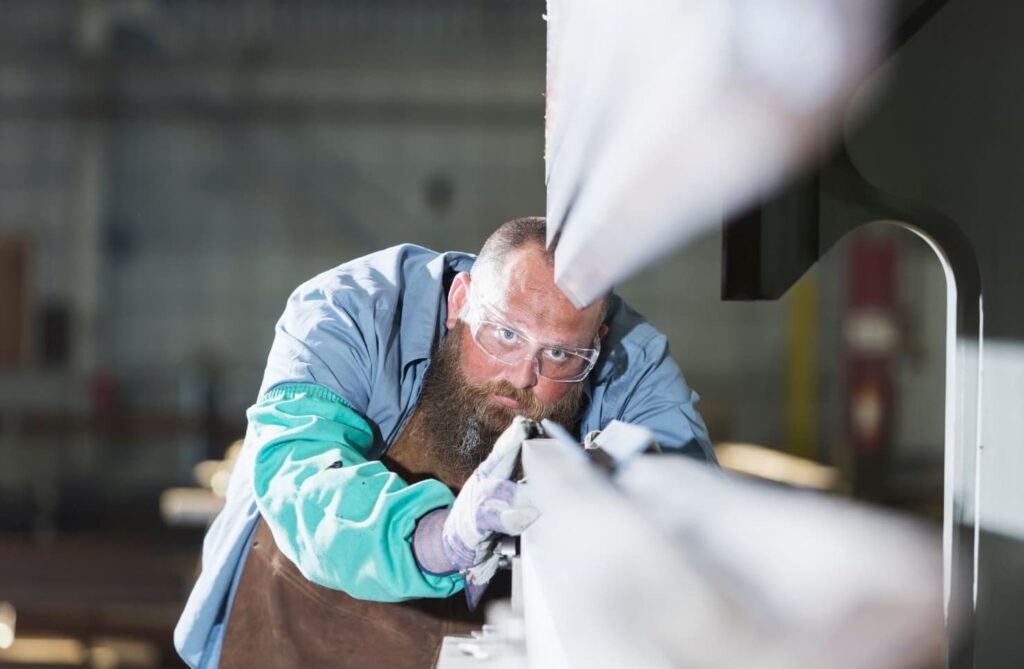
Most sheet metal design errors don’t happen during production — they start earlier, in planning or communication. Maybe it’s the...
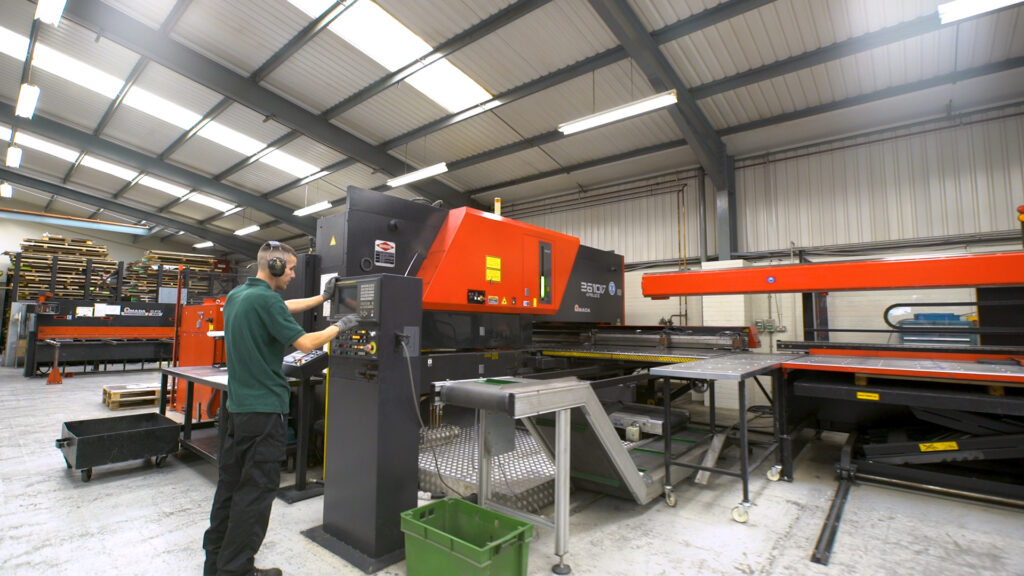
While Numerical Control (NC) has been around for decades, Computer Numerical Control (CNC) continues to reshape how precision parts get...